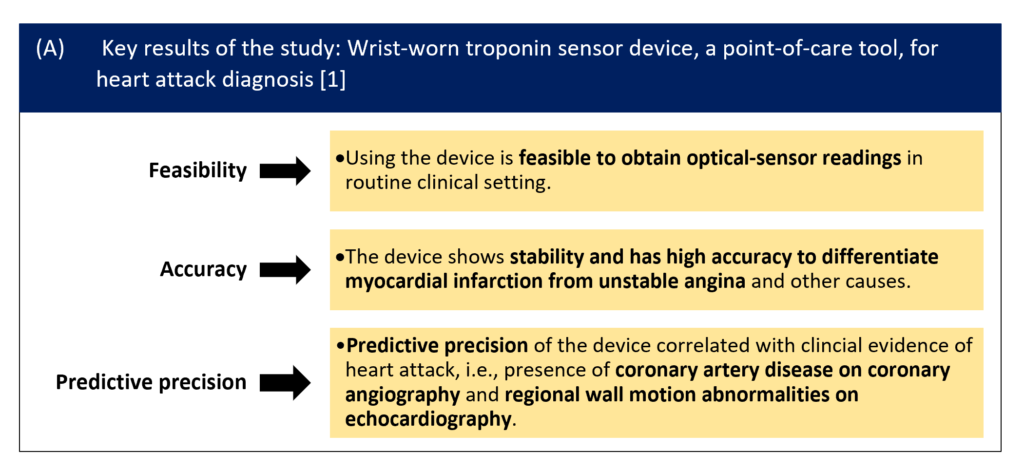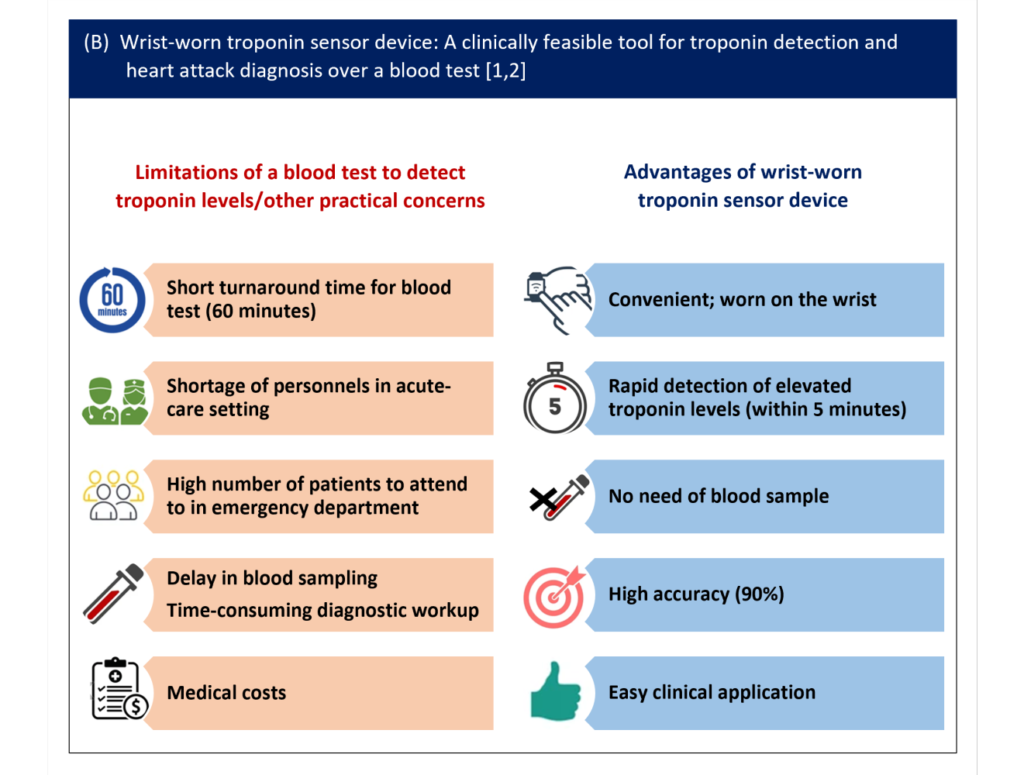
Technology integrated with science has led to great innovations in medicine and optimization of healthcare solutions. Sensor-based technologies have been utilized in the development of smart wearable devices, as a potential solution for disease detection and management. Similarly, such devices have a potential to become a point-of-care tool in cardiovascular medicine, for example, clinical settings needing early detection of heart attack and risk stratification of suspected patients. A breakthrough Indian study, recently published in the journal, European Heart Journal Digital Health, reported that a novel wrist-worn sensor device can accurately predict a diagnosis of heart attack with 90% accuracy in just 5 minutes. The sensor uses infrared light to detect elevated troponin levels in the blood (Note: Troponin is a protein which is released from the heart muscles into the blood when the heart muscles are damaged) [1,2].
The study proposed that the wearable troponin sensor device can be useful for early and rapid diagnosis of heart attack as it will save the time required for a blood test, which is routinely done to detect troponin levels. Using the device may shorten the time to triage in emergency departments and allow for timely initiation of further management strategies [1,2].
The multicenter, observational, real-world study enrolled 238 patients with suspected acute coronary syndrome from 5 sites in India. The study assessed the feasibility of using a novel wrist-worn transdermal infrared spectrophotometric sensor (T-ISS) with machine learning analytics to predict elevated levels of troponin as a single-point evaluation for the diagnosis of myocardial infarction (heart attack) [1]. Key results of the study and advantages of wearable troponin sensor device over conventional blood test to detect troponin levels are highlighted in Graphic (A) and (B), respectively.


Clinical implication [1,2]
- This is a first study to assess a wearable infrared-based device for bloodless detection of elevated troponin levels in patients suspected to have a heart attack.
- Although there are some point-of-care diagnostic tools for detecting troponin levels, they are inconvenient to use in clinical settings or have low sensitivity and are not wearable/hand-held devices like the one described in this study.
- As the device does not utilize blood sample to provide the results, the device can be used without any regulatory standards that are usually applied to clinical tests using human samples.
- This wrist-worn device has a potential to become a point-of-care diagnostic tool to detect heart attack and stratify patients according to their risk in a real-world acute-care as well as community settings. It may be useful in emergency departments for triage, chest clinics, and ambulance set-up; however, future studies are warranted.
References
- Sengupta S, Biswal S, Titus J, et al. A novel breakthrough in wrist-worn transdermal troponin-I-sensor assessment for acute myocardial infarction. Eur Heart J Digit Health. 2023. https://doi.org/10.1093/ehjdh/ztad015
- Bracelet sensor assesses troponin levels to aid heart attack diagnosis. American College of Cardiology [Internet]. 2023 [cited 2023 March 14]. Accessed from Bracelet Sensor Assesses Troponin Levels to Aid Heart Attack Diagnosis – American College of Cardiology (acc.org)
